Artypie
Well-known member
Thomas Goode Messenger is recorded as having a plumber's, glazier's and glassfitter's business in High Street, Loughborough, as early as 1855. In 1858 he formed his own company of Messenger and Co. and by 1863 is listed as a plumber and hydraulic engineer. By 1877 the firm is described as 'horticultural builders and hot water apparatus manufacturers'.
The firm was acquired in 1874 by Walter Chapman Burder (Walter C. Burder is noted as living at Field House on Ashby Road in 1891.) and it opened it's Cumberland Road site (off Ashby Road) in 1884. A foundry was then built and further extensions in 1895 led to the complete closure of the High Street Branch.
The firm was famous, particularly in the Victorian and Edwardian period, for making greenhouses, verandahs, summer houses, cucumber frames, melon pits, mushroom beds, orchid stages, vineries and peach-houses. As the demand for these products declined from the 1930s, the company began to concentrate more on the manufacture of heating equipment and became an engineering firm. It was also known by the name Midland Horticultural Company.
I have found a photo from the first world war period, showing munitions workers on the site. Messenger & Co Ltd closed on 11th March 1980.
Historically, the area bordering the Cumberland Road has been referred to as ‘Messenger’s Village’, containing the homes of both the workers and owners of the firm. It is now a conservation area. The Messenger site is now sub-divided into smaller units and houses a variety of smaller trades, including car repairs and a gate maker. The present owner does not seem interested in maintaining the fabric of the buildings and they are becoming quite dilapidated in places. Some of the units have been fire damaged and remain in a derelict state. Loughborough Echo has a video of one such fire.
A catalogue which I have aquired, dating from 1926 shows the full range of Messenger's products and has a very impressive client list, including orders from royalty, nobility and abroad.
Nearby was the Charnwood Railway, whose goods shed still exists along Station Avenue, which was a minor branch line to the coalfields of Coalville and closed in 1965. You can still see railway lines embedded in the tarmac under the canopy on the former Messenger's site, which is now called the Cumberland Road Trading Estate. presumably this allowed Messengers to get deliveries straight from the railway.
Now for my photos. bearing in mind this trading estate is still in use and well secured, opportunities for internal photos were severely limited. I did however get some internal photos of the fire damaged units but they weren't very noteworthy. Therefore the majority of my pictures are external. There is an amazing hoist under the undamaged canopy that I think is worthy of being preserved.
Old front entrance
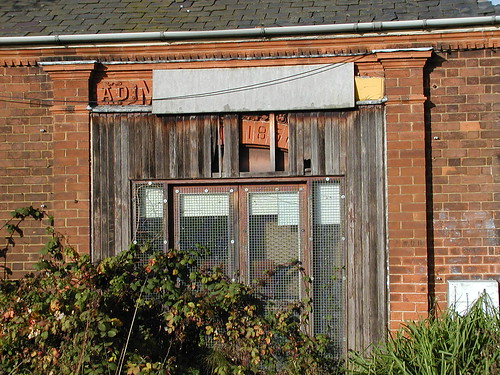
Boundary sign
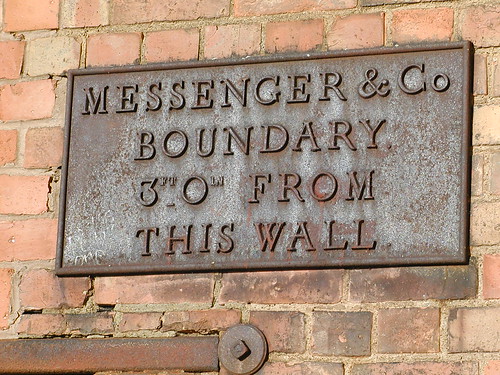
Foundry chimney
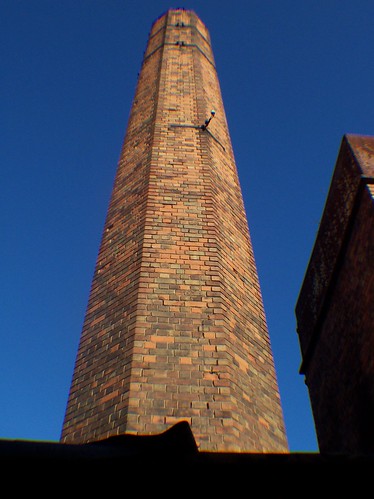
Bogie, under the intact canopy
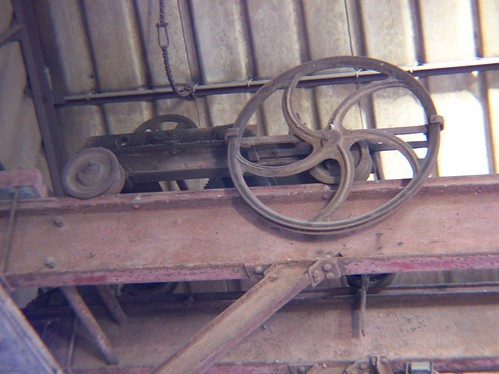
Hoist, safe working load 3 tons

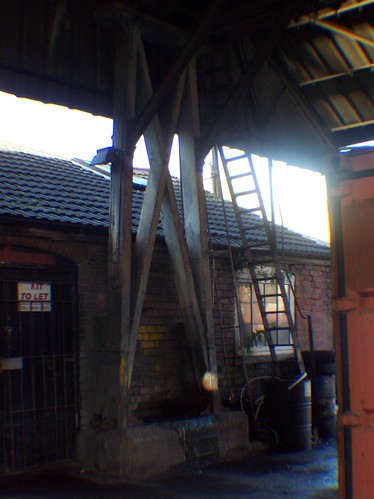
Cast iron ladder up to the bogie
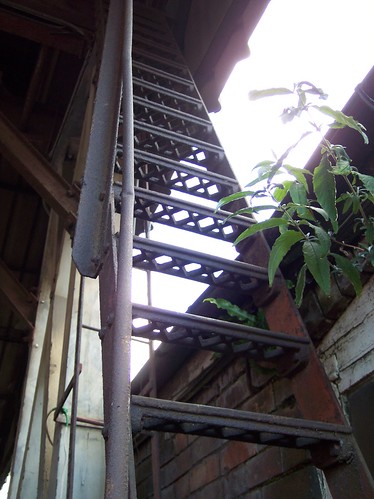
As you can see, the place has been unsympathetically modified

but I rather liked this little doorway that has been bricked up
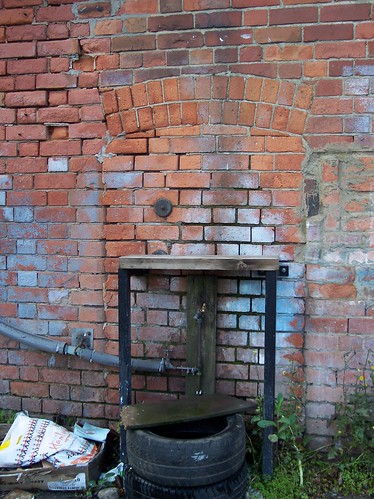
Another little doorway, but how it stays up I have no idea, as there seems to be very little mortar left
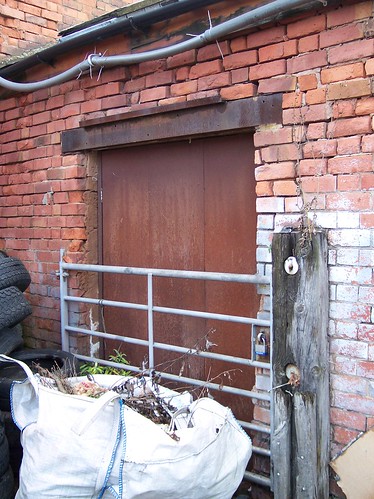
Steelwork remaining from a damaged canopy, which was hit by a lorry resulting in most of the roof falling off.
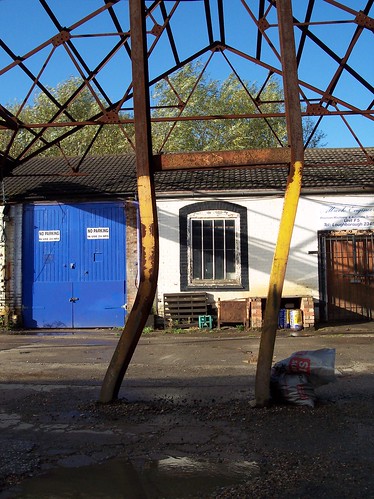
The right hand RSJ used to go into the building but was cut off after the collision

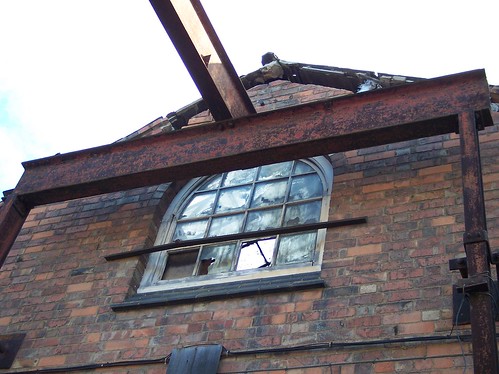
Inside one of the burnt out units
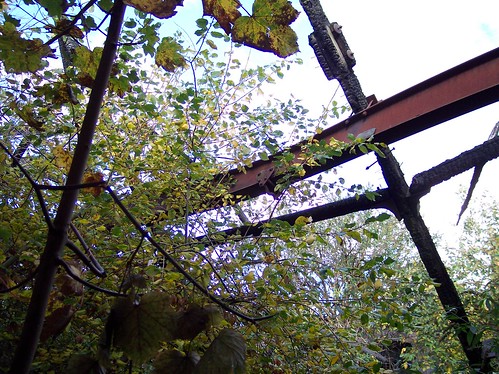
The heat of the fire inside one of the units was sufficient to melt the roof glass and aluminium
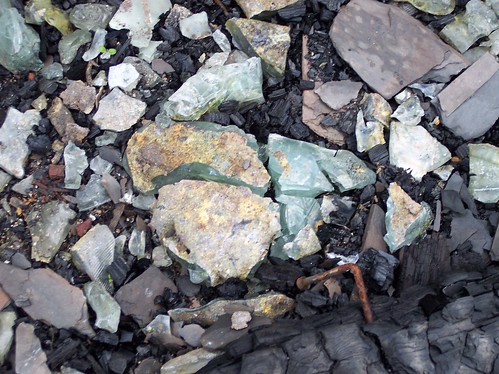
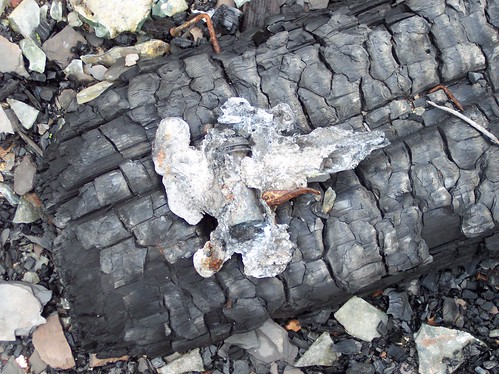
There are a few more pics from the catalogue on my Flickr.
The firm was acquired in 1874 by Walter Chapman Burder (Walter C. Burder is noted as living at Field House on Ashby Road in 1891.) and it opened it's Cumberland Road site (off Ashby Road) in 1884. A foundry was then built and further extensions in 1895 led to the complete closure of the High Street Branch.
The firm was famous, particularly in the Victorian and Edwardian period, for making greenhouses, verandahs, summer houses, cucumber frames, melon pits, mushroom beds, orchid stages, vineries and peach-houses. As the demand for these products declined from the 1930s, the company began to concentrate more on the manufacture of heating equipment and became an engineering firm. It was also known by the name Midland Horticultural Company.
I have found a photo from the first world war period, showing munitions workers on the site. Messenger & Co Ltd closed on 11th March 1980.
Historically, the area bordering the Cumberland Road has been referred to as ‘Messenger’s Village’, containing the homes of both the workers and owners of the firm. It is now a conservation area. The Messenger site is now sub-divided into smaller units and houses a variety of smaller trades, including car repairs and a gate maker. The present owner does not seem interested in maintaining the fabric of the buildings and they are becoming quite dilapidated in places. Some of the units have been fire damaged and remain in a derelict state. Loughborough Echo has a video of one such fire.
A catalogue which I have aquired, dating from 1926 shows the full range of Messenger's products and has a very impressive client list, including orders from royalty, nobility and abroad.
Nearby was the Charnwood Railway, whose goods shed still exists along Station Avenue, which was a minor branch line to the coalfields of Coalville and closed in 1965. You can still see railway lines embedded in the tarmac under the canopy on the former Messenger's site, which is now called the Cumberland Road Trading Estate. presumably this allowed Messengers to get deliveries straight from the railway.
Now for my photos. bearing in mind this trading estate is still in use and well secured, opportunities for internal photos were severely limited. I did however get some internal photos of the fire damaged units but they weren't very noteworthy. Therefore the majority of my pictures are external. There is an amazing hoist under the undamaged canopy that I think is worthy of being preserved.
Old front entrance

Boundary sign

Foundry chimney

Bogie, under the intact canopy

Hoist, safe working load 3 tons


Cast iron ladder up to the bogie

As you can see, the place has been unsympathetically modified

but I rather liked this little doorway that has been bricked up

Another little doorway, but how it stays up I have no idea, as there seems to be very little mortar left

Steelwork remaining from a damaged canopy, which was hit by a lorry resulting in most of the roof falling off.

The right hand RSJ used to go into the building but was cut off after the collision


Inside one of the burnt out units

The heat of the fire inside one of the units was sufficient to melt the roof glass and aluminium


There are a few more pics from the catalogue on my Flickr.
Last edited:



